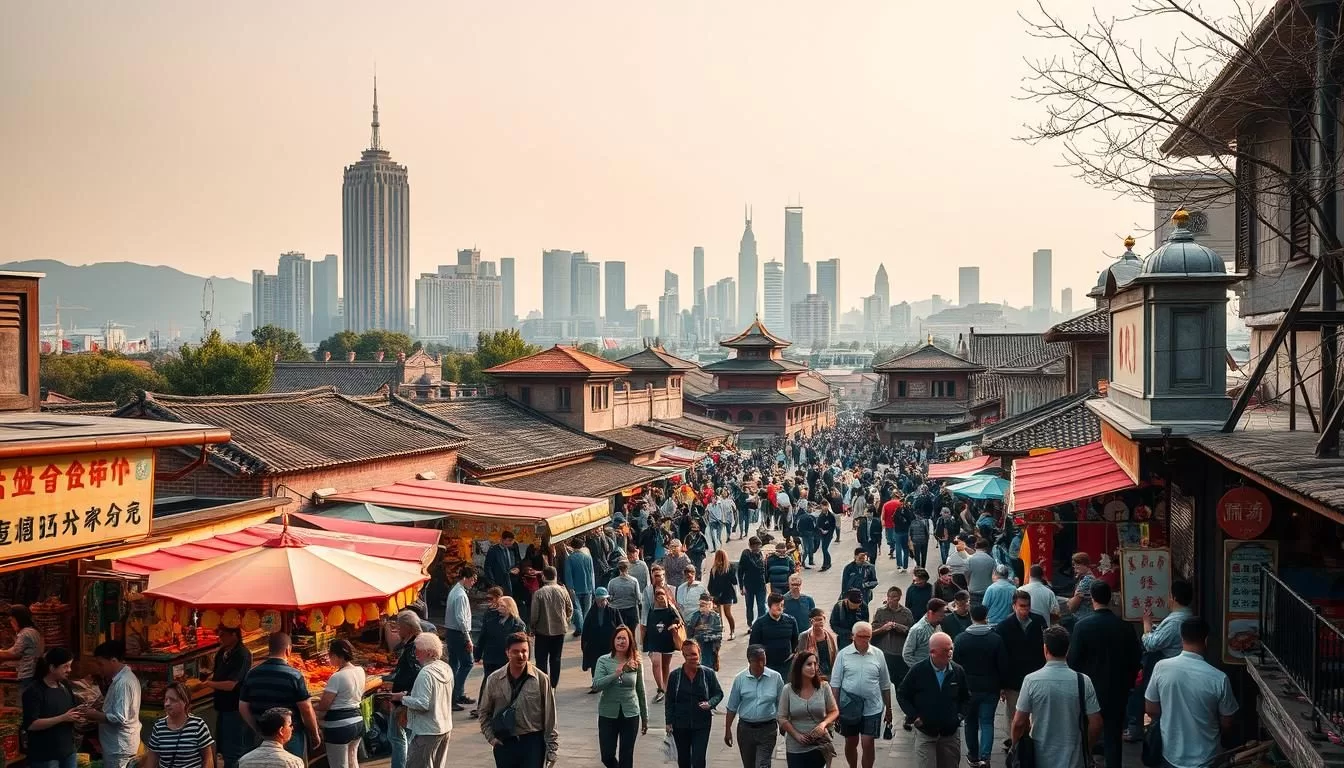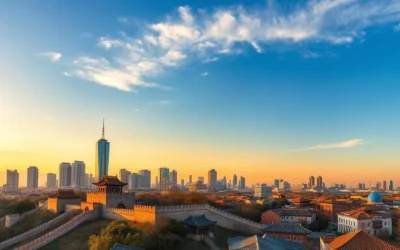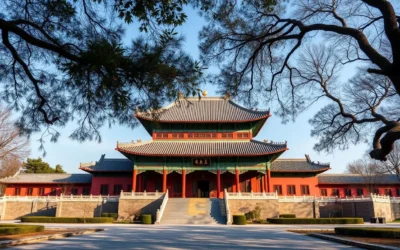✓ Accommodations ✓ Flights ✓ Rental Cars
When you step into a culturally rich area, one of the first things you notice is its language. It’s more than just a way to communicate—it’s a reflection of history, identity, and tradition. In this region, the variety of spoken forms adds depth to its unique character.
Standard Mandarin is the most common language, spoken by a significant portion of the population. However, local dialects like Wu also play a vital role in everyday life. These linguistic elements are deeply tied to the region’s heritage and culture.
Understanding these languages and dialects helps you appreciate the area’s diversity. It’s a fascinating journey into how people connect, communicate, and preserve their traditions.
Introduction to Zhejiang’s Linguistic Heritage
Exploring a region’s culture often starts with understanding its language. In this area, the way people speak reflects centuries of history and tradition. The diversity of languages here is a testament to its rich cultural tapestry.
Overview of Zhejiang Province’s Cultural Background
The region’s cultural evolution has been shaped by its unique geographic and historical context. From ancient trade routes to modern economic hubs, its population has always played a key role in shaping its identity. The government has also been instrumental in preserving this heritage, ensuring that local traditions thrive alongside global influences.
By June 2023, the area had established over 11,730 cultural circles, making libraries and cultural centers accessible within a 15-minute walk. This effort highlights the commitment to fostering a deep connection between the people and their cultural roots.
Purpose and Scope of This Article
This article aims to provide an in-depth look at the linguistic diversity of the region. You’ll discover how history and government policies have influenced the evolution of languages. From official dialects to local speech, each part of the linguistic landscape tells a unique story.
Understanding these languages helps you appreciate the region’s role in the world. Whether through trade, art, or daily communication, language remains a vital thread connecting the past to the present.
Historical Evolution of Languages in Zhejiang
The way people communicate in this region has been shaped by centuries of history and cultural exchange. From ancient times to modern days, the Chinese language has evolved, reflecting the area’s rich heritage.

Ancient Influences on Local Speech
Early influences on local speech can be traced back to ancient dynasties like the Qin and Ming. These periods introduced new words and phrases, blending with existing dialects. For example, the Wu dialect, spoken by approximately 83 million people in eastern China, has roots in these ancient times.
Trade routes also played a role in shaping the area’s linguistic landscape. Merchants from different regions brought their languages, creating a unique mix of sounds and expressions.
Impact of Dynastic Rule and Trade on Language Diversity
Successive dynasties left their mark on the region’s speech patterns. The Qin dynasty standardized writing, while the Ming era fostered cultural exchange. These shifts influenced both official and local dialects.
Port cities, known for their bustling trade, became hubs of linguistic diversity. Maritime commerce introduced new terms and expressions, enriching the city’s language mix. This blend of influences is still evident today.
As political power shifted, so did the way people spoke. Each dynasty brought changes, creating a dynamic linguistic environment. This evolution highlights the deep connection between history and language.
The Official Language: Standard Chinese and Its Role
Language serves as a bridge connecting people across cultures and generations. In this region, Standard Chinese, also known as Mandarin, plays a central role in daily life. It’s not just a way to communicate—it’s a unifying force that brings diverse groups together.
Mandarin Chinese and Its Nationwide Adoption
Mandarin is the most widely spoken language in the People’s Republic of China, with over 1.2 billion speakers worldwide. Its adoption began during the Qin dynasty, when efforts to standardize writing laid the foundation for modern communication. Today, it’s the backbone of education, media, and government systems.
Understanding Mandarin has become essential for daily interactions. From bustling city centers to rural areas, it’s the common thread that ties people together. Its widespread use ensures smooth communication across different regions and dialects.
How Standard Chinese Shapes Daily Communication
Standard Chinese simplifies interactions in a country with immense linguistic diversity. Whether you’re in a classroom, workplace, or government office, it’s the language spoken to ensure clarity and efficiency. This consistency fosters unity and progress.
Modern reforms have further strengthened its role. Simplified characters, introduced in the mid-20th century, made learning easier for millions. This blend of tradition and modernity highlights the dynamic nature of language evolution.
By embracing Standard Chinese, the region maintains a balance between preserving local dialects and fostering national unity. It’s a testament to the power of language in shaping societies.
Exploring Local Dialects and Linguistic Variations
The linguistic landscape of this region is a vibrant tapestry of dialects and traditions. Each dialect tells a story of cultural identity and historical evolution. From the bustling cities to the quiet countryside, these variations shape how people connect and communicate.

Wu Dialect: The Heart of Eastern Zhejiang
The Wu dialect is central to the cultural identity of the eastern region. Spoken by approximately 83 million people, it’s one of the most prominent dialects in the area. Its unique phonetic features and vocabulary reflect centuries of history and local traditions.
This dialect thrives in urban centers like Shanghai and extends into neighboring areas. Despite modernization, many speakers continue to preserve its rich heritage, ensuring it remains a vital part of daily life.
Southern Min and Cantonese Influences in Border Areas
In border regions, Southern Min and Cantonese have left a lasting impact. Southern Min, spoken by 6.2% of the population, is prevalent in coastal areas. Cantonese, with 5.6% native speakers, is prominent in southern cities and diaspora communities.
These dialects bring a unique flavor to the linguistic mix. Their influence is evident in local customs, cuisine, and even media, showcasing the region’s cultural diversity.
Other Regional Dialects and Their Unique Features
Beyond Wu, Southern Min, and Cantonese, other dialects add to the region’s linguistic richness. For example, Hakka, spoken by 3.5% of the population, is known for its distinct phonetic elements. Xiang and Jin dialects also contribute to the area’s heritage.
Each dialect has its own charm and history. Together, they form a mosaic of sounds and expressions that define the region’s identity.
| Dialect | Percentage of Speakers | Key Features |
|---|---|---|
| Wu | 6.1% | Phonetic richness, urban prevalence |
| Southern Min | 6.2% | Coastal influence, cultural depth |
| Cantonese | 5.6% | Southern prominence, global reach |
| Hakka | 3.5% | Distinct phonetics, cultural resilience |
Understanding these dialects helps you appreciate the region’s linguistic diversity. It’s a journey into how people preserve their heritage while adapting to modern life.
Zhejiang Province, China: Official and Widely Spoken Languages
Understanding the linguistic landscape of a region offers a window into its cultural soul. In this area, language is more than just a tool for communication—it’s a reflection of identity and heritage. Recent statistics reveal fascinating trends in how both official and local dialects continue to evolve.
Recognizing the Language Statistics and Prominence
Mandarin remains the dominant language, spoken by over 1 billion people globally. In this region, it serves as the primary medium for education, media, and government communication. However, local dialects like Wu, with 81.8 million speakers, hold significant cultural importance.
During this period of rapid urbanization, there’s a growing emphasis on preserving linguistic diversity. Current policies aim to balance the promotion of Mandarin with the protection of local dialects. This approach ensures that the development of modern communication doesn’t overshadow traditional speech forms.
For example, the Wu dialect thrives in urban centers, while Southern Min and Cantonese add unique flavors to the linguistic mix. These dialects are not just forms of speech—they’re living connections to the region’s past.
“Language is the roadmap of a culture. It tells you where its people come from and where they are going.”
In the people republic, the preservation of linguistic heritage is a priority. Efforts to document and promote local dialects ensure they remain vibrant parts of daily life. This commitment highlights the region’s role in safeguarding its unique Chinese variety of languages.
Today, the interplay between official and local languages continues to shape the region’s identity. By understanding these dynamics, you gain a deeper appreciation for how language connects people to their roots while embracing the future.
Linguistic Diversity and Minority Languages in the Region
The richness of a region’s culture is often reflected in its linguistic diversity. Minority languages play a vital role in preserving heritage and identity. These languages are not just forms of communication—they are living connections to history and tradition.
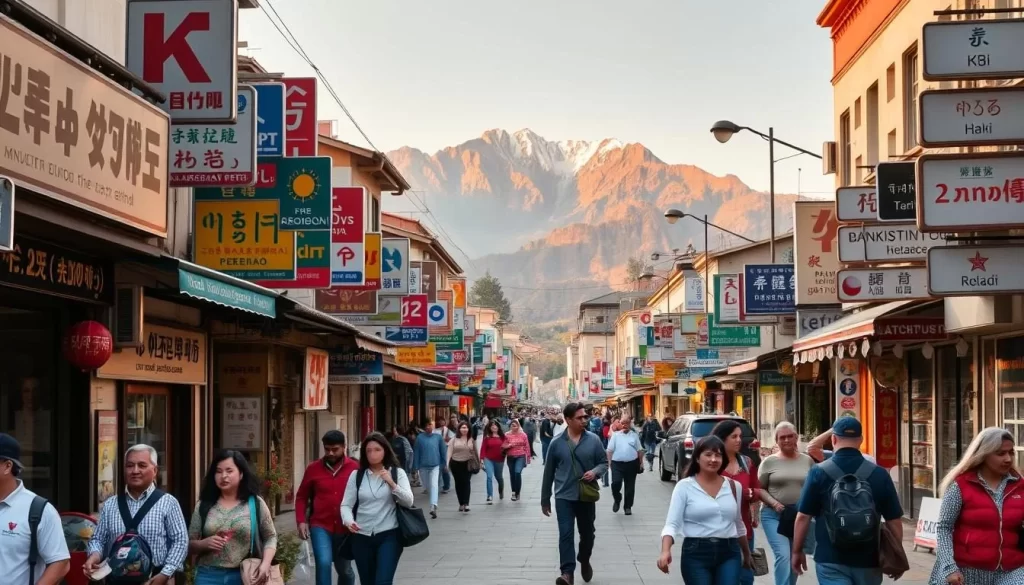
Support for Minority Languages by the Government
The government has taken significant steps to protect and promote minority languages. Policies focus on education, media, and community programs to ensure these languages thrive. For example, Wu, spoken by 6.1% of the population, is actively supported in urban centers.
Efforts also extend to border areas, where languages like Southern Min and Cantonese are preserved. These initiatives highlight the commitment to maintaining linguistic diversity.
Examples of Regional and Ethnic Language Variants
Several regional languages add to the cultural tapestry of the area. Hakka, spoken by 3.5% of the population, is known for its distinct phonetic features. Similarly, Xiang and Jin dialects contribute to the region’s unique linguistic identity.
These languages face challenges, such as urbanization and globalization. However, community efforts and government support ensure their survival. For instance, Tibetan and Uyghur languages are preserved through cultural programs.
| Language | Percentage of Speakers | Key Features |
|---|---|---|
| Wu | 6.1% | Urban prevalence, phonetic richness |
| Hakka | 3.5% | Distinct phonetics, cultural resilience |
| Xiang | 3.0% | Regional influence, tonal variety |
Understanding these languages helps you appreciate the region’s culture. It’s a journey into how people preserve their heritage while adapting to modern life. For more insights, explore linguistic diversity in China and main languages in the region.
Language Policy and Government Influence in Zhejiang
Language policies shape the way communities communicate and preserve their heritage. In this region, the government plays a pivotal role in ensuring linguistic diversity thrives alongside modernization. Through education and standardization efforts, these policies aim to balance tradition with progress.
Efforts in Language Standardization and Education
The government has implemented reforms to standardize communication, ensuring clarity and unity. Mandarin, also known as Standard Chinese, is the primary focus of these efforts. It’s taught in schools and used in media, creating a common language for all.
Educational programs emphasize bilingualism, allowing students to learn both Mandarin and local dialects. This approach preserves cultural identity while promoting national unity. For example, the Wu dialect, spoken by a significant number of people, is integrated into regional curricula.
Modern Reforms and Their Impact on Regional Speech
Modern reforms have transformed how people communicate in the region. Simplified characters and updated teaching methods make learning easier. These changes have gained prominence in public discourse, ensuring that language remains a vital part of daily life.
Local dialects, once at risk of fading, are now protected through government initiatives. Programs like the Project for the Protection of Language document and preserve these speech forms. This ensures that linguistic diversity continues to enrich the region’s culture.
“Language is not just a tool for communication—it’s a bridge to our past and a guide to our future.”
By embracing these reforms, the region maintains a balance between preserving its heritage and adapting to modern needs. This article highlights how government policies shape the linguistic landscape, ensuring that every voice is heard.
Cultural Impact: Language in Arts, Media, and Daily Life
Language is the heartbeat of culture, weaving through every aspect of life. In this region, it’s not just a tool for communication—it’s a way to preserve traditions and express creativity. From music to literature, language shapes how people connect with their heritage and the world.
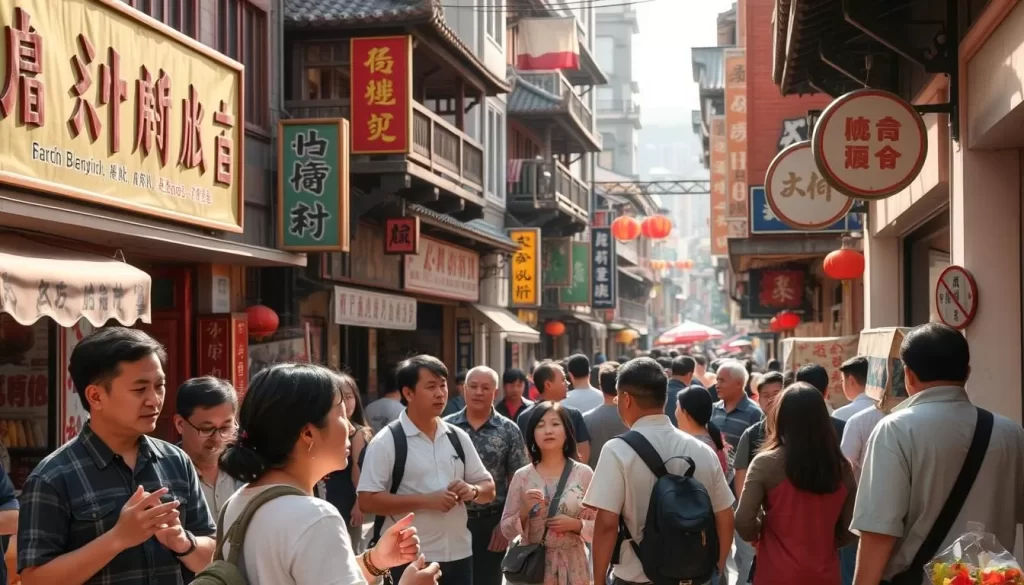
The Role of Language in Preserving Local Traditions
Local dialects like Wu play a crucial role in keeping traditions alive. Spoken by over 81.8 million people, these dialects are deeply tied to the region’s history and identity. They are used in festivals, storytelling, and rituals, ensuring that cultural practices are passed down through generations.
For example, traditional operas often incorporate local dialects, adding authenticity and emotional depth. This connection between language and tradition highlights its importance in maintaining cultural continuity.
Language’s Influence on Music, Literature, and Media
Language also drives creativity in music, literature, and media. Standard Chinese, spoken by over 1 billion people, is the backbone of modern communication. It’s used in films, books, and songs, making them accessible to a wide audience.
At the same time, local dialects add unique flavors to artistic works. For instance, regional songs often blend Mandarin with dialect lyrics, creating a rich tapestry of sounds. This mix of languages reflects the region’s diversity and cultural pride.
“Language is the art of expressing the soul of a culture.”
In media, bilingual advertisements are common, combining English with Standard Chinese to appeal to global audiences. This strategy not only promotes products but also bridges cultural gaps, showcasing the region’s openness to the world.
| Art Form | Language Used | Cultural Impact |
|---|---|---|
| Traditional Opera | Local Dialects | Preserves heritage |
| Modern Films | Standard Chinese | Reaches wider audience |
| Regional Songs | Mandarin & Dialects | Celebrates diversity |
Understanding the role of language in arts and media helps you appreciate its power to shape culture. Whether through traditional practices or modern innovations, language remains a vital thread connecting the past to the present. For more insights, explore how language influences cultural identity in diverse communities.
Economic and Global Perspectives on Zhejiang’s Languages
Language plays a pivotal role in shaping economic strategies and fostering global connections. In this region, linguistic diversity is not just a cultural asset—it’s a driving force behind innovation and international collaboration. By understanding how language influences trade, technology, and cultural exchange, you can appreciate its significance in today’s interconnected world.
Language as a Catalyst for Economic Growth
In bustling cities, linguistic diversity fuels economic growth. Local dialects like Wu, spoken by over 81.8 million people, create unique opportunities for businesses to connect with diverse communities. This cultural richness attracts foreign investment, with over 1,132 foreign companies registered in the region by 2014.
Language skills are a crucial asset in global networking. For example, the Hangzhou Bay Economic and Technological Development Area, established in 2014, has enhanced the region’s reputation and influence. This development highlights how language proficiency can drive economic success.
Global Cultural Exchanges and Linguistic Influence
Language also facilitates global cultural exchanges. By 2014, the region had established trading ties with over 185 countries, showcasing its ability to bridge cultural gaps. This international dialogue is supported by bilingual education and media, which promote both local dialects and Standard Chinese.
For instance, the Jiaxing-Shaoxing River-Crossing Bridge, completed in 2013, has reduced commuting distances and boosted economic growth. Such infrastructure projects are made possible through effective communication and collaboration.
“Language is the key to unlocking global opportunities and fostering mutual understanding.”
Understanding the economic and global impact of language helps you see its role in shaping the future. For more insights, explore the rich history and cultural heritage of Zhejiang Province.
Conclusion
Language is a living testament to the history and identity of a region. Over centuries, the spoken language has evolved, reflecting cultural shifts and economic growth. Standard Chinese, with over 1.1 billion speakers, remains the backbone of communication, while dialects like Wu and Cantonese add unique flavors to daily life.
Government policies have played a key role in shaping this linguistic system. Efforts to standardize education and preserve local dialects ensure that heritage thrives alongside modernization. This balance is vital for maintaining cultural diversity in the state.
From ancient trade routes to modern economic hubs, language has been a driving force. It connects people, fosters innovation, and bridges cultural gaps. Understanding this linguistic journey helps you appreciate the region’s rich heritage and its role in the global community. For more insights, explore the linguistically diverse country that continues to inspire.
The above is subject to change.
Check back often to TRAVEL.COM for the latest travel tips and deals.
